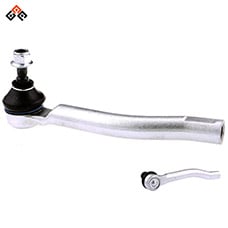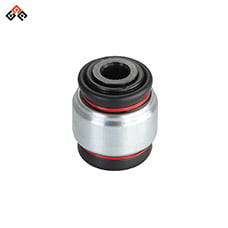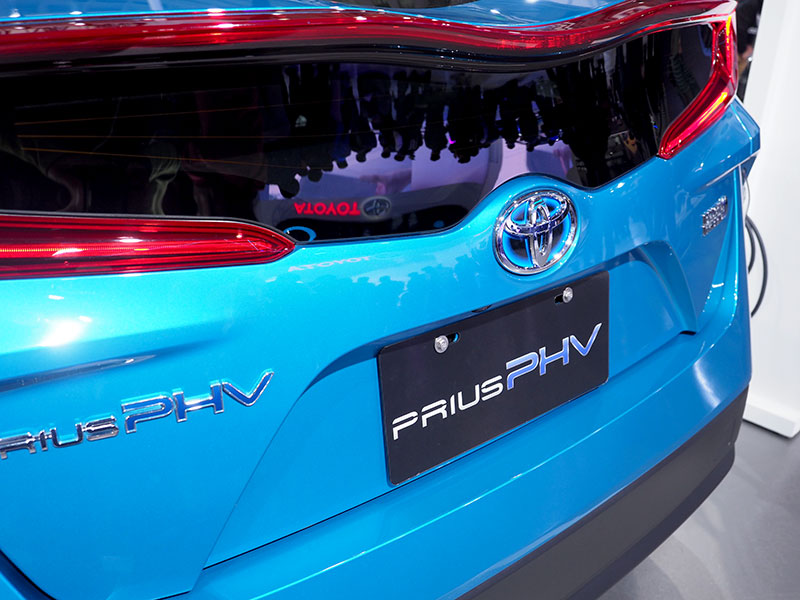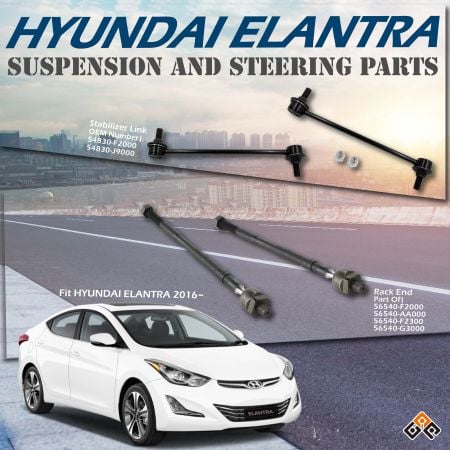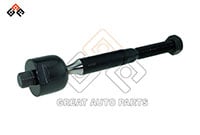Toyota stabilizer Links and Rear Struts
Replacing Sway bar links for TOYOTA
Rear struts and stabilizer links are essential components of a vehicle's suspension system. They work together to ensure the vehicle remains stable, handles well, and provides a comfortable ride. Understanding their connection and functionality is crucial for maintaining your vehicle's performance and safety.
The Essential Role of Struts in Vehicle Suspension
Support and Stability
Struts are crucial for the overall stability and support of a vehicle. They bear the vehicle's weight and maintain its height. Struts handle both vertical and horizontal forces, keeping the vehicle balanced and steady on the road, which is essential for safe driving.
Shock Absorption
Struts absorb shocks from bumps, potholes, and other road irregularities, preventing these forces from transferring to the vehicle's body. This absorption ensures a smoother ride, reducing wear on other suspension components and improving passenger comfort.
The Connection Between Rear Struts and Stabilizer Links and Their Impact on Vehicle Dynamics
Mechanical Connection Between Rear Struts and Stabilizer Links
The stabilizer links, also known as sway bar links, play a crucial role in connecting the sway bar to the vehicle's suspension system. Specifically, they attach to the rear struts via a bracket or a mounting point on the strut assembly. This connection is typically secured with bolts to ensure a tight and secure fit.
Attachment Points
The stabilizer links are bolted to the strut and the sway bar, creating a solid connection that allows the components to work in unison.Functionality
This setup enables the stabilizer bar to transfer forces during cornering directly to the strut. When the vehicle goes around a corner, the sway bar twists, and this force is transmitted through the stabilizer links to the struts, helping to reduce body roll and maintain stability.
Impact on Toyota Dynamics
The connection between the rear struts and stabilizer links significantly influences the vehicle's dynamics, particularly in terms of handling and comfort.
Improved Handling
The combination of rear struts and stabilizer links ensures that the vehicle remains stable during turns. By reducing body roll, these components help prevent oversteer and understeer, providing better control and confidence for the driver. This stability is especially noticeable during high-speed maneuvers or sharp turns.Enhanced Comfort
Besides improving handling, this connection also contributes to a smoother ride. The struts absorb shocks from road imperfections, while the stabilizer links minimize side-to-side motion. Together, they help maintain a comfortable and stable ride for passengers, reducing the impact of bumps and uneven surfaces.Balanced Performance
The synergy between the rear struts and stabilizer links creates a balanced suspension system that enhances both safety and driving pleasure. This balance ensures that the vehicle responds predictably to steering inputs, making it easier to drive and reducing driver fatigue.
Detecting Worn Stabilizer Links
Symptoms to Watch For
Worn stabilizer links often produce clunking or rattling noises over bumps, poor handling, and increased body roll during turns. These symptoms indicate that the stabilizer links may be loose or damaged.
Visual Inspection
During maintenance checks, look for worn or cracked bushings and loose connections in the stabilizer links. Replacing worn links can restore the vehicle's stability and improve overall handling.
How Worn Struts and Stabilizer Links Impact Your Toyota's Alignment
Worn struts and stabilizer links can significantly impact your vehicle's alignment. The suspension system, which includes these components, plays a crucial role in maintaining proper wheel alignment. When struts or stabilizer links wear out, they can cause the suspension to sag or become loose. This misalignment can lead to several issues:
Uneven Tire Wear
Misaligned wheels can cause tires to wear unevenly. You might notice more wear on one side of the tire than the other, which can reduce the lifespan of your tires and affect vehicle safety.Poor Handling
A vehicle with alignment issues may pull to one side, making it difficult to keep the car driving straight. This can also lead to a decrease in handling performance, especially when turning or navigating curves.Increased Fuel Consumption
Misaligned wheels create more rolling resistance, which can cause the engine to work harder and increase fuel consumption.
Post-Replacement Alignment
When replacing worn struts and stabilizer links, it's crucial to have your vehicle’s alignment checked and adjusted. Here’s why:
Optimal Handling
Proper alignment ensures that your vehicle handles as it should, providing a safer and more comfortable driving experience.Tire Longevity
Correct alignment reduces uneven tire wear, which can extend the life of your tires and save money in the long run.Fuel Efficiency
A properly aligned vehicle rolls more efficiently, which can improve fuel economy.
The alignment process involves adjusting the angles of the wheels to meet the manufacturer’s specifications. These angles include:
Camber
The tilt of the wheel from top to bottom. Proper camber ensures that the tire tread has even contact with the road.Toe
The direction the wheels point in relation to each other. Proper toe settings prevent the tires from pointing in or out excessively.Caster
The angle of the steering pivot. Proper caster helps in maintaining straight-line stability.
Struts vs. Stabilizer Links
Struts and Shocks are the Same
One common misconception is that struts and shocks (shock absorbers) are the same thing. While they both play roles in the suspension system and serve to absorb shocks from the road, they are distinct components with different functions:
Struts
Struts are structural components of the suspension system. They not only absorb shocks but also support the weight of the vehicle and provide a mounting point for the coil spring. Struts are integral to the vehicle's steering system and directly affect alignment angles. They help maintain the vehicle's ride height and are essential for proper handling and stability.Shocks
Shock absorbers, or shocks, are standalone components that primarily serve to absorb and dampen road shocks and vibrations. Unlike struts, they do not support the vehicle’s weight. Shocks help control the movement of the suspension and keep the tires in contact with the road, but they do not play a structural role in the suspension system.
Understanding the difference between these components is crucial for proper maintenance and repair of the vehicle’s suspension system.
Stabilizer Bars Eliminate Body Roll
Another common misconception is that stabilizer bars (sway bars) completely eliminate body roll. In reality, stabilizer bars help reduce but do not entirely eliminate body roll. Here’s how they work and what they can and cannot do:
Function of Stabilizer Bars
Stabilizer bars connect the left and right sides of the suspension and help distribute the force exerted on the vehicle during cornering. By doing so, they reduce the amount of body roll, which is the tilting of the car’s body toward the outside of a turn.Limitations
While stabilizer bars significantly improve stability and handling, they do not eliminate body roll completely. The amount of body roll experienced can also depend on other factors such as vehicle speed, weight distribution, and the condition of other suspension components.Combined Effort
Stabilizer bars work in conjunction with struts, shocks, and other suspension components to provide a balanced and stable ride. No single component can address all aspects of vehicle stability on its own.
Features of Great Auto Parts' Stabilizer Links
High-Strength Steel
Constructed using either cold-forged or hot-forged high-strength steel, these links offer superior durability and performance.Anti-Rust Protection
Each link undergoes a surface treatment that provides excellent protection against rust, enhancing its longevity.Wide Swing Angle
Designed with a minimum swing angle of 60 degrees, these links ensure improved flexibility and performance.Strong Pull-Out Strength
Our stabilizer links meet or exceed OE standards for pull-out strength, guaranteeing reliability.Direct OE Replacement
These parts are engineered to replace the original equipment seamlessly, without any fitting issues.Low Minimum Order Quantity
We accommodate orders as small as 30 pieces, making it easier for smaller operations to access our high-quality parts.

